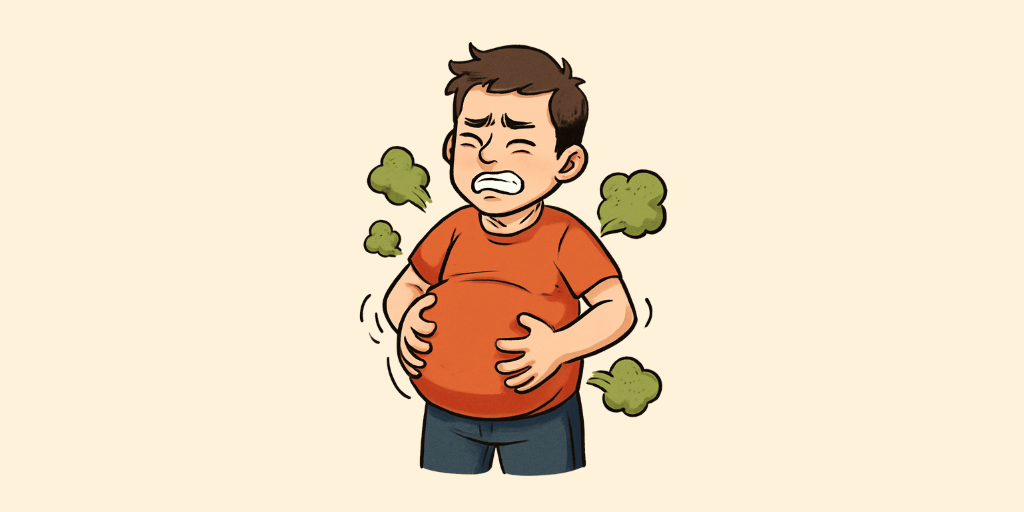Ayurvedic Name: Adhman
Description:
Adhmana is a condition similar to chronic bloating and gaseous distension, where excessive Vata accumulation causes tightness and pressure in the abdomen. Unlike Anaha, where there is obstruction, Adhmana involves irregular peristaltic movements, which leads to gas retention and discomfort. It can be triggered by eating incompatible foods, overconsumption of legumes, stress, or weak digestive fire. Treatment involves Vata-pacifying therapies like Abhyanga (oil massage), Swedana (sudation), herbal formulations like Hingvastak Churna, and dietary modifications to improve gut motility.
Signs & Symptoms:
- Anāha (Abdominal Distention): Abdominal bloating and fullness, causing discomfort.
- Vāta Vikāra: A contributing factor to the distention, especially with aggravated Vāta Doṣa.
- Āma: Accumulation of undigested food causing heaviness in the stomach.
- Svara Śuddhi (Digestive Imbalance): A decrease in digestive fire leading to sluggish digestion.
Diagnosis:
Barium Wwallow or X-ray
Risk Factors:
- Dietary Factors play a crucial role in the development of Adhman, with irregular eating habits such as skipping meals, overeating, or eating at irregular hours disturbing the digestive system. Poor food combinations, like pairing dairy with fruits or hot and cold foods together, can impair digestion and lead to bloating. Additionally, excessive consumption of gas-producing foods, such as beans, cabbage, onions, carbonated drinks, and fried foods, can exacerbate bloating by increasing air (Vata) in the digestive tract.
- Lifestyle factors: are equally important in the onset of Adhman. High levels of emotional stress and anxiety can disrupt digestion, leading to bloating and discomfort. A sedentary lifestyle, where physical activity is minimal, slows down the digestive process, promoting the accumulation of gas. Irregular sleep patterns or inadequate rest can also contribute to digestive disturbances, as the body’s natural rhythm is disturbed, impairing proper digestion and leading to bloating.Medical conditions such as Irritable Bowel Syndrome (IBS), constipation, or any digestive disorders can significantly increase the risk of developing Adhman. These conditions disrupt the normal digestive process, leading to gas buildup and bloating. A weakened digestive fire (Mandagni) due to these conditions causes incomplete digestion, leading to fermentation of food and gas formation. Additionally, older adults may experience weaker digestion, making them more prone to bloating, and women may experience bloating during menstruation or menopause due to hormonal fluctuations that affect the digestive system.
Complications:
- Bloating (Adhman): Accumulation of gas and undigested food in the stomach and intestines, leading to a feeling of fullness.
- Abdominal Discomfort (Vata Shoola): Pain or discomfort in the abdomen due to excess air and gas. Indigestion
- (Agnimandya): Weak digestive fire causing food to remain undigested, leading to bloating and discomfort.
- Loss of Appetite (Aruchi): Decreased desire to eat due to poor digestion and gas accumulation.
Epidemeology:
Adhman (Abdominal Distension) is frequently seen in individuals with an imbalance of the Vata dosha, particularly in cases of poor digestion, constipation, or excess gas. The condition is more common in older adults and those with a history of gastrointestinal disorders.

